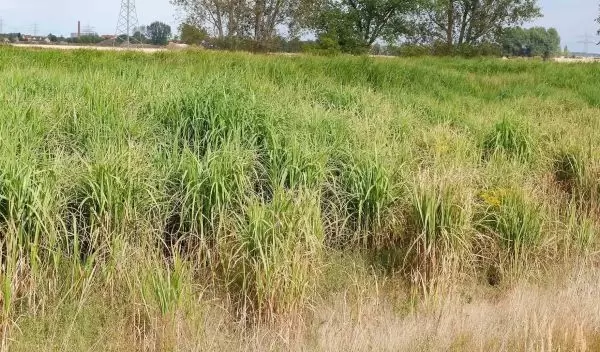
A perennial grass could mitigate climate change in the Midwest
Amid predictions of climate change driving up temperatures and causing more extreme heat in the Midwest, a new study led in part by University of Maryland researchers has found that growing one particular perennial grass could cut Midwest warming by 1 degree Celsius.
Miscanthus x giganteus, also known as giant miscanthus, grows up to 10 feet tall with wide bamboo-like stems and green leaves, creating a canopy that's likely to lower regional summer temperatures while increasing humidity, rainfall and overall crop productivity, according to research published in GCB Bioenergy.
The study, funded by the U.S. National Science Foundation, was led by scientists Xin-Zhong Liang and Yufeng He. It provides new insights into nature-based mitigation strategies for global warming, environmental conservation, food crop and bioenergy production, and agricultural sustainability.
"Growing perennial grasses on marginal land not only can reduce soil erosion, restore carbon stocks, and provide feedstocks for biofuels and bioproducts," Liang said, "but also can be an effective mitigation strategy to contain regional climate change, preventing the U.S. agricultural heartland from the warming-and-drying trend currently projected."
Miscanthus x giganteus is water-efficient, noninvasive and requires little fertilizer. It can also grow on marginal land, or land that has little or no agricultural or industrial value due to poor soil or other conditions. The U.S. heartland, which has marginal land that goes unused or is extensively grazed, offers the perfect conditions for miscanthus.
The researchers paired a dynamic crop growth model with a regional climate model to find that miscanthus did more than cool the land -- it significantly increased summer precipitation. In the Midwest simulations, summer precipitation increased between 14% and 15%; in the Southern heartland, it increased between 14% and 16%.
Unlike the temperature changes, which are greatest in regions with the most miscanthus, the precipitation changes can occur hundreds of miles beyond due to atmospheric circulation.
"Global temperatures will continue to rise due to climate change, even if we are able to curb greenhouse gas emissions and develop new technologies for carbon removal," said Laura Lautz, a program director in NSF's Division of Earth Sciences. "This research adds to our toolbox of strategies to minimize the impacts of future warming, increase food security, and improve the resilience of agricultural systems."
The team is now working on a follow-up study on multiple bioenergy crops on U.S. marginal land. The scientists recently found that energy cane, a genetically modified variation of sugarcane, is more productive in Southern states, while miscanthus fares better in the north.


